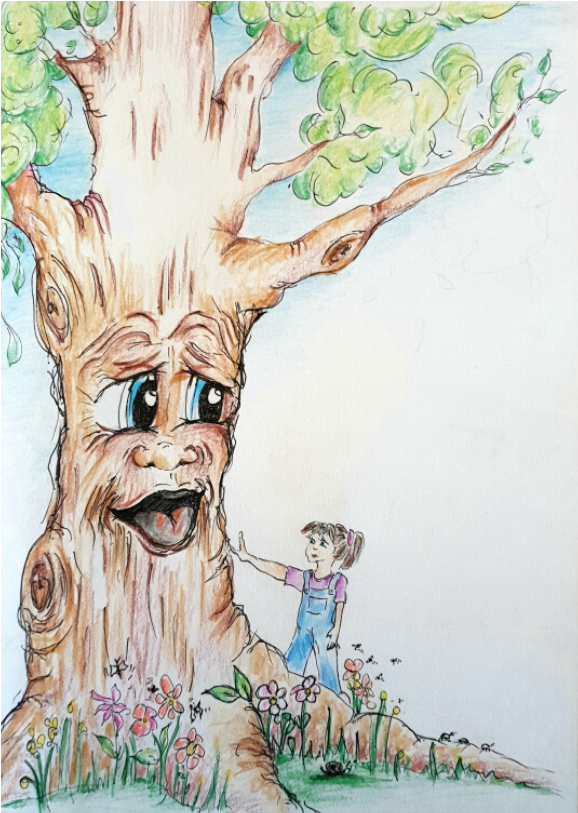“Love the Forest,” a new book for children
Love the Forest, written by Nina Koevoets, illustrated by Kym Patten
Out of concern for our forests, Nina Koevoets has written a timely children’s book: Stella Says: Love the Forest.
Forests are rapidly disappearing, harvested for paper, palm oil — which is in different products, even cookies — soy, mining, etc. By what you buy, you can make a difference.
But what is actually more important is to prevent it. And that's why Stella says: Love the forest. If we can truly love the forests, love nature and perceive our connectedness, then human beings will no longer treat nature as a material resource. This book can be a spark of inspiration to start acting from a place of love and connection.
It tells the story of a little girl, Stella, that goes into the forest by herself, despite the fence in front of the entrance. When she is stung by a bee, she becomes as small as the flowers she has picked. A new world opens up where Stella can talk to the plants and animals in the forest. The tree Birky introduces her to the forest. Stella overcomes her fear of spiders, learns about dreams from a butterfly and about beauty from a flower. Then she hears that the forest will be cut down. She is angry and sad. She talks to the ants who are on their way to defend the forest and decides to do something herself, because Stella loves the forest and wants to keep it.
Why did you write this book?
I read how much forest is cut down every day and how irreversible such loss is. I felt sad because I used to enjoy spending time in trees and forest as a child and I would like the future children to be able to enjoy that as well. I had written a story that took place in the forest and I decided that I'll adapt it, linking it to deforestation and print it, so more children, and parents, can read it. I hope that the readers will feel motivated to do something; I left the ending open so that I won't provide just one solution, but people can brainstorm various actions they could do and added an epilogue with some background information and discussion questions.
What/who inspired you?
It started with a drawing that I made of a girl sitting on a flower with a spiderweb and a bee. I started to wonder what story the drawing was about and wrote the first draft of the book. That story was mostly about overcoming fear and gaining self confidence. The butterfly came in as a symbol of transformation. It was a few months later when I read about deforestation. It was not so hard to adapt it, because the theme of the story, confidence fits: many people don't have enough confidence to believe their actions matter, but there have been some examples -- like the Indian Chipko movement -- of people that were able to protect forests from being cut down. I also added the scene of the ants, to illustrate how anger may sometimes lead us to solutions that will make the problem worse, such as taking up weapons. Stella acknowledges that there are rightly angry and promises she will do something to help.
You are Dutch, why did you decide to also make an English version?
I tried to make drawings with the book myself, but they didn't look professional. I asked in an international Facebook group ("The more beautiful world our hearts know is possible") if someone would like to make illustrations for free. There were about four women who did and I decided to work with Kym from Australia. She liked the story and wanted to sell some books in her side of the world as well, so I translated the story. This way it could potentially also reach more people. The only disadvantage was that the title is a Dutch word play that disappears when you translate.
What do you hope the book will accomplish?
I sent it to a few publishers, but when they didn't respond positively I decided to just print it myself and be happy if even just 50 people or 100 would read it, because if even just 10% would act on the story that'd be great. I also wanted to plant a seed for people to start to think about the forest differently: as an ecosystem to which we're also connected. In Dutch the title is a word play: saying "I love" is literally "I hold of..." but holding something, without of, also means to keep something. So I put the 'of' between brackets giving it this double meaning. I chose this title because I hope that people will connect to their love for nature and then 'naturally' want to protect it and no-one has to be motivated anymore to act.
How can people order a book?
People can go to the website and fill out a short ordering form.




